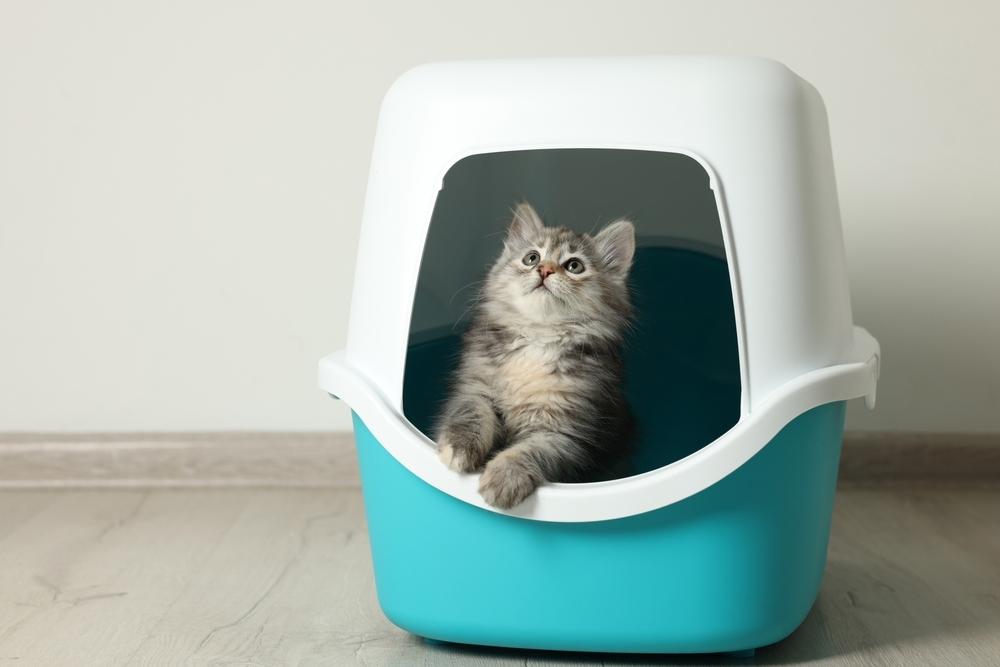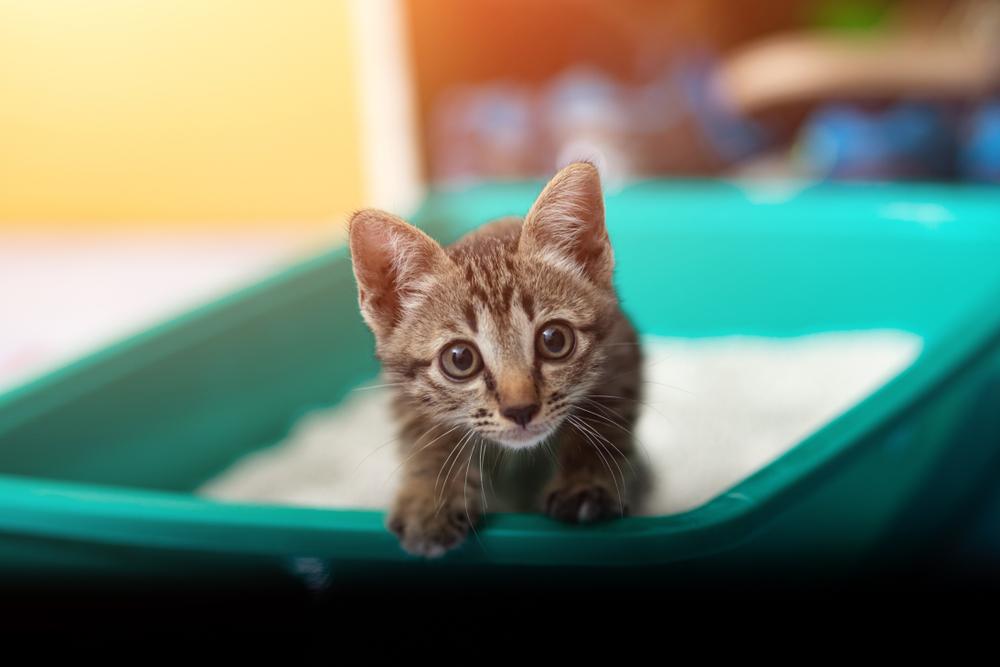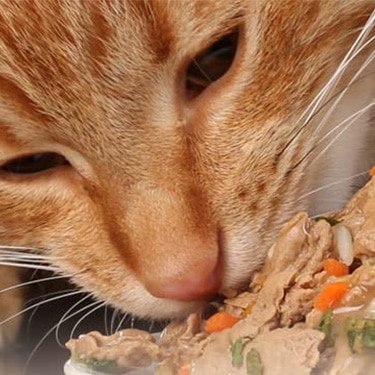

If you're reading this, chances are you just brought home a new feline friend or are planning to soon, and you need to know how to litter train a kitten. Fortunately, domestic cats are naturally tidy animals, and they're generally well suited to the litter box. Their ancestors buried their excrement to hide from predators or competitors, and modern-day cats retain this trait. This instinct benefits everyone involved. It provides you with easy cleanup and your cat with a predetermined place to eliminate and bury, which is mentally and physically healthy for them.
Read on to learn how to facilitate the habit from the get-go and manage any issues that might arise.
When to Start Litter Training Kittens
Understanding when to litter train kittens starts with a question: When do kittens start using the litter box? Kittens don't have the control to "hold it" and wait to reach the litter box until they're around 3 to 4 weeks old. At that time, you can introduce them to the litter box (though adoption generally occurs later at around 8 to 12 weeks of age). In fact, kittens typically start copying their mother around this time, watching what she does and taking cues. But while attentive mothers know best how to litter train a kitten, kittens who miss out on this learning window may need extra guidance from you.

How Often Do Kittens Use the Litter Box?
Kittens tend to visit the litter box more often than adult cats. How frequently your kitten visits the litter box depends on their age, overall health, and how often they eat. Youngsters eat small amounts more often, while older kittens eat larger volumes less often. As a general rule of paw, young kittens usually urinate after each meal and defecate anywhere from one to four times a day. So, if you feed your kitten three to four times a day, you can expect to find the same amount of wet spots plus a few solid deposits daily. If you see a great deal more or less, consult your veterinarian for an exam.
How to Litter Train a Kitten
While many cats already know how to use a litter box, sometimes you have to train kittens if they've never used one before. Follow these steps for how to train a kitten to use a litter box.
Assemble Supplies
At the very least, you'll need a litter box and litter. You can also place a mat under the litter box to minimize mess. Wondering how to choose the right cat litter? Fine and sandy litter is preferable but keep a close eye on your kitten to ensure they're not eating it. If you have a kitten with mobility issues (or they're still very tiny), opt for a box with low sides that's easy for them to get in and out of. Place the box in a quiet, low-traffic area of your home. If you have multiple floors, place a box on each level. Kittens have short legs, so this helps them get to the box in time.
Provide one more box than the number of cats in your home (e.g., if you have two cats, provide three litter boxes). Some cats prefer to have one box for liquids and another for solids, and some won't want to share with other kitties. Providing multiple boxes in different rooms helps prevent arguments over who gets to use the potty.
Introduce Your Kitten to the Litter Box
Once you set up the litter box(es), it's time to introduce your kitten. Set your kitten in the box to allow exploration and sniffing. Avoid interacting with or distracting your kitten while they're in the box, and don't relocate the boxes once you've shown your kitten where to go. Place your kitten in the box after meals and naps to encourage regular elimination. Additionally, stay vigilant! Any time you see your kitten crouching like they're about to go, jump in and get them to the litter box.
You may need to confine your kitten to a small space, like a bathroom, until they start using the box regularly.
Practice Patience and Positivity
There are bound to be accidents while you're litter box training. Don't punish or scold your kitten; getting rid of cat odors can be accomplished by cleaning up the mess with an enzymatic cleaner will do the trick and continous education and kitten training will be a must. Some kittens will get it right away, while it can take others more time. When you see your kitten using the box successfully, resort to positive reinforcement cat training rituals that can include treats and praise.
Troubleshooting Litter Box Training
If your kitten continues to miss the litter box despite your best efforts, consult your vet to rule out any underlying health concerns. In the meantime, ensure you've met all the litter box best practices.

Quick Fixes
Some cats can be quite picky about the conditions in which they're willing to eliminate. If your kitten doesn't seem to be getting the hang of using the litter box, a few factors could be to blame.
Box Size
Bigger is always better.
Box Shape
For many cats, covered boxes can feel confining or trap bad smells. Other cats may prefer the security and privacy of a covered box. Consider providing multiple types of boxes so your cat can choose what they prefer.
Litter Smell or Texture
Avoid scented litters, and look for fine, dust-free granules.
Box Location
Noisy or highly trafficked areas (e.g., a buzzing dryer or pestering dog) can keep some cats away.
Box Availability
If you have more than one cat, provide multiple boxes in different rooms so one cat can't "guard" it and prevent others from accessing it.
Box Condition
You may need to scoop your cat's box more often. The general recommendation is to scoop at least once a day. Twice or more is better. Fully dump and clean the box monthly.
You may need to experiment until you find the right combination of factors that makes your kitten comfortable using the litter box.
Understanding How to Potty Train a Kitten
Now that you know how to litter train a kitten, you have all the tools you need to get started. If you have any questions or concerns along the way, your vet is there for support. Fortunately, most kittens take to a litter box like a duck to water.

























